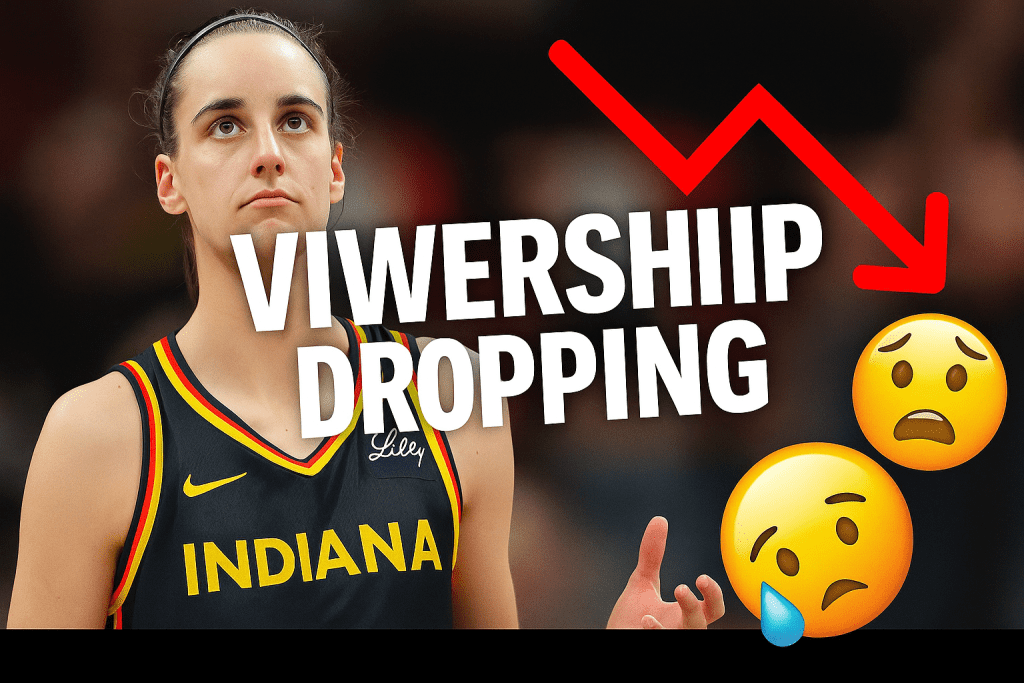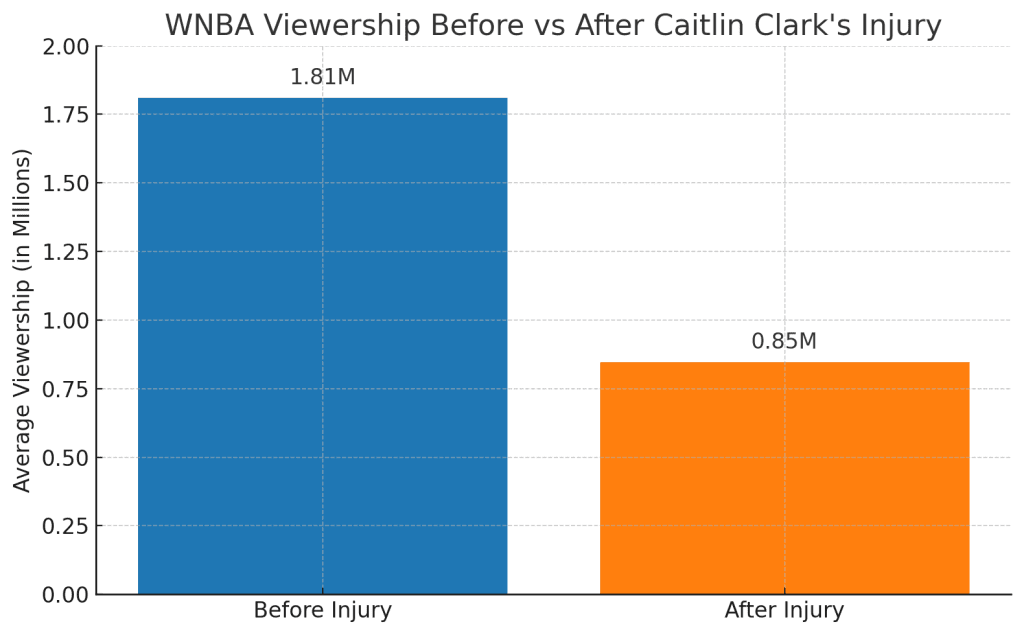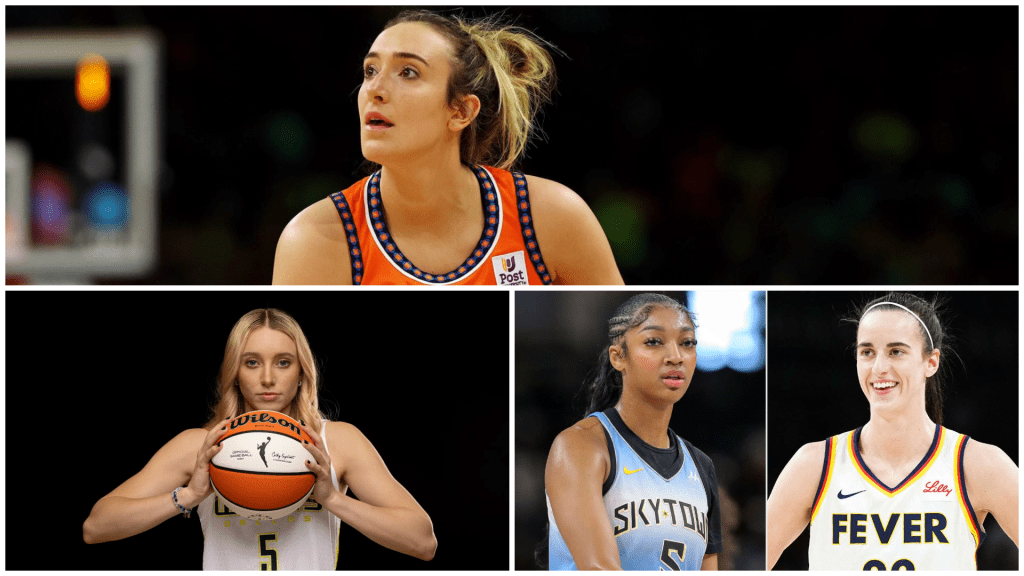
WNBA Ratings Drop Over 50% After Caitlin Clark’s Injury—What This Stunning Collapse Means for the League’s Future
The WNBA was flying high just a few weeks ago. Stadiums were packed, jerseys were selling like crazy, and the media couldn’t stop talking about one thing—Caitlin Clark. The rookie from Iowa had not only brought her electric game to the pros, but she also brought millions of new fans along with her. It felt like the WNBA was finally breaking through the noise, getting mainstream attention, and becoming something bigger than ever before.
But then May 24 happened.
Caitlin Clark suffered an injury. It wasn’t a season-ending one, but it was enough to sideline her. And almost instantly, everything changed. The buzz died down. The headlines shifted. And most shockingly—the WNBA’s TV ratings crashed by over 50%. Just like that.

The League Without Its Star
Before her injury, Clark was averaging over 19 points, nearly 10 assists, and 6 rebounds a game. Her highlights were going viral, her games were appointment viewing, and fans were tuning in from everywhere—college ball fans, NBA fans, and even people who had never watched a WNBA game before.
She was a magnet.
But when she left the court, it became painfully clear just how much weight she was carrying for the league. According to Nielsen ratings, WNBA national TV viewership dropped from around 1.81 million per game to 847,000—a 53% collapse in just two weeks.
That’s not just a dip. That’s a free fall.
Even ticket sales got hit hard. Some games that would have featured Clark saw resale ticket prices fall by 40–70%. The excitement in arenas dimmed. Social media buzz faded. And suddenly, the league didn’t feel as alive as it had a month ago.
This is the reality: Caitlin Clark wasn’t just a rising star. She was the engine of the WNBA’s momentum.
What This Really Means for the WNBA

This situation raises a serious question for the league: Is it healthy for your entire ecosystem to rely so heavily on one player?
Caitlin Clark’s injury has exposed something fragile. If one rookie’s absence causes a 50% viewership crash, then the system might not be as strong as we thought. A single player should not have the power to sink or float an entire league’s attention.
And yet, here we are.
But let’s go deeper. This isn’t just about Clark being gone. It’s about how people connected with her.
She’s a white rookie in a majority Black league. She’s from Iowa, not a basketball powerhouse. She has swagger, range, and plays with emotion. Her college battles, especially with Angel Reese, became national stories. Every pass, every stare-down, every three-pointer turned into a meme, a segment, or a tweet.
So when she was gone—even temporarily—viewers weren’t just missing her stats. They were missing the story.
And the WNBA has struggled to keep those stories going.
Yes, there are plenty of other stars—A’ja Wilson, Sabrina Ionescu, Breanna Stewart, and of course, Angel Reese. But the league hasn’t done enough to push multiple narratives. It leaned heavily on the Clark phenomenon—and when that flame paused, it didn’t have a strong second torch to pass.
On Reddit and Twitter, fans have already noticed. Some say, “It was never about the WNBA. It was always about Caitlin.” Others ask, “Why isn’t Angel Reese getting more screen time? Where’s the drama now?” One viral comment put it plainly: “This just proves how much she was carrying. Everyone else better step up.”
And that’s the key: the rest of the league now has to step up.
The coaches, the teams, the media—all need to rally around building deeper fan engagement. Rivalries. Trash talk. Underdog stories. Comebacks. League officials should be putting faces and personalities in front of the camera—letting the world get to know these athletes beyond the box scores.
The truth is: sports run on emotion, not just skill.
People watch because they feel something. And right now, most of that feeling was attached to Caitlin Clark.
She will return soon—maybe even stronger than before. And the ratings will spike again. But the WNBA can’t afford to keep hitting the “Clark button” every time they need attention.
They need more stories. More connection. More moments.
Because if one injury can cause this much of a collapse, then what happens if she takes a season off? What if another star gets hurt? What if fans get bored?
This isn’t about blaming Caitlin or the league. She did her part. Now it’s the league’s turn to build around her, not on top of her.
We all saw what was possible when the right story and the right player aligned. The challenge now is to keep the momentum alive when that player isn’t on the court.
And if they do it right, the next time Caitlin Clark returns to the floor, she won’t be the only one carrying the league. She’ll be leading it, surrounded by stars who’ve built their own gravity too.
That’s when the WNBA won’t just trend for a few weeks. That’s when it will truly arrive.